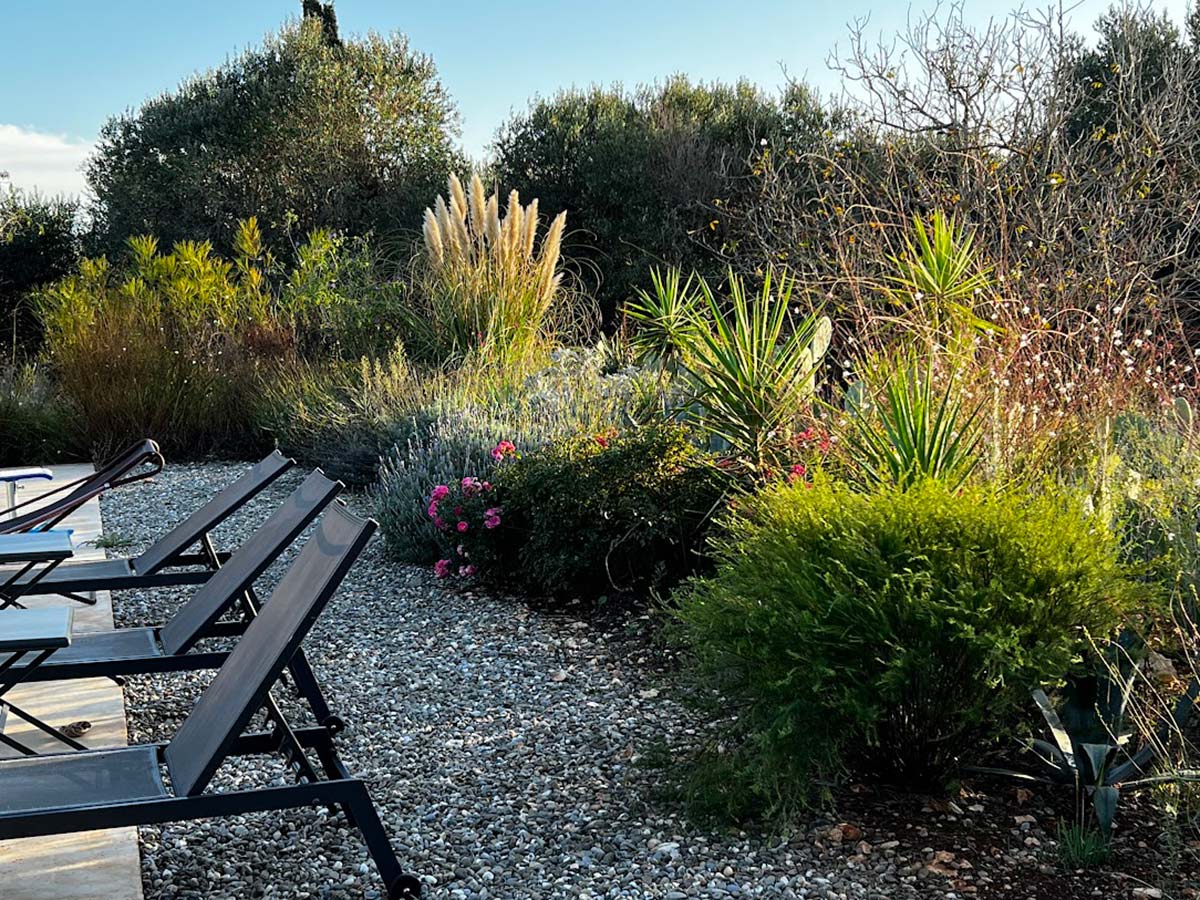Cornelius Gavril likes to call himself a ‘gardener’. In fact, he has a university degree in interior design, to which he has added a course in landscape design, following an innate passion. Fuorisalone aficionados will probably have seen some of the installations he has created for the architecture studio Piuarch, with whom he has been collaborating since 2015. With them, too, he has created a roof vegetable garden that covers the building where they are based, in the heart of Brera.
Hello, Cornelius – let’s start with the Piuarch vegetable garden, of which you sent us a lovely photo from above.
Here it is in its latest version: first we did the open-air pharmacy, then the kinetic kitchen garden, then we focused on biodiversity and filled it only with flowers. Green is needed. To convey this idea in 2017 I had covered the studio façade with flowers. It was a way of making people understand that nature can also act as a curtain, covering the concrete (of which cities like Milan are full). And I also told less known things, for example that roses can take root if you put them in a potato.
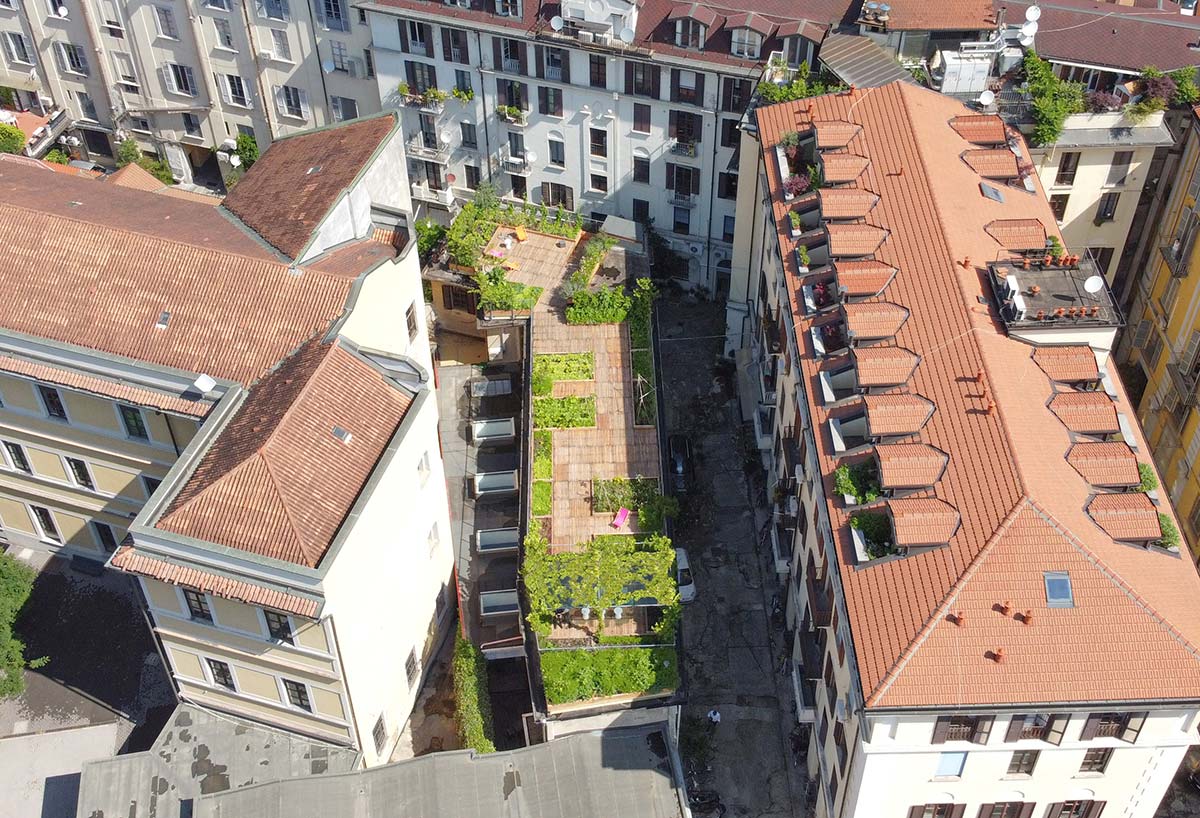
The outdoor furniture world is booming. Why do you think that is?
After Covid, things changed: people realised that the outdoors is not just an aesthetic element, but also a useful one. So many people are now asking for houses with some kind of ‘outside’: a garden, a terrace, large balconies. It is really the need to have a green corner. In a strange way, we are quickly reconnecting with nature. This is why the demand for outdoor furniture is growing.
It used to be that the garden was almost a backdrop that you looked at from inside the house. Now it is a place where people want to live. How has the way you design gardens changed?
It used to be that you would design the project, present it and the client would say ‘OK, nice, do it’. Now it has become something you do in collaboration with people. We pay much more attention to their demands for sustainability, the choice of native species: these are the starting points of your project.

If there are children playing football, can you not put up fragile plants, for example?
Surely all these things are related to the end user. If you know there are small children, you use certain types of plants; if there are animals, you avoid species that are harmful to them: there are some that are bad for cats or dogs.
What do you think are the fastest growing green spaces in a city?
Green roofs are growing a lot. And residential courtyards, although it is difficult to get everyone to agree: I waited three years for a project to come to fruition. But it is a sector in which there is demand. In a project in Milan that has just been completed, I have placed many large pots of plants in the space: when you cross the courtyard you are immersed in greenery, it looks like a jungle. It is largely an office building, so the intention was to enhance the route people take to get to work. The fact that people understand that potential is good.
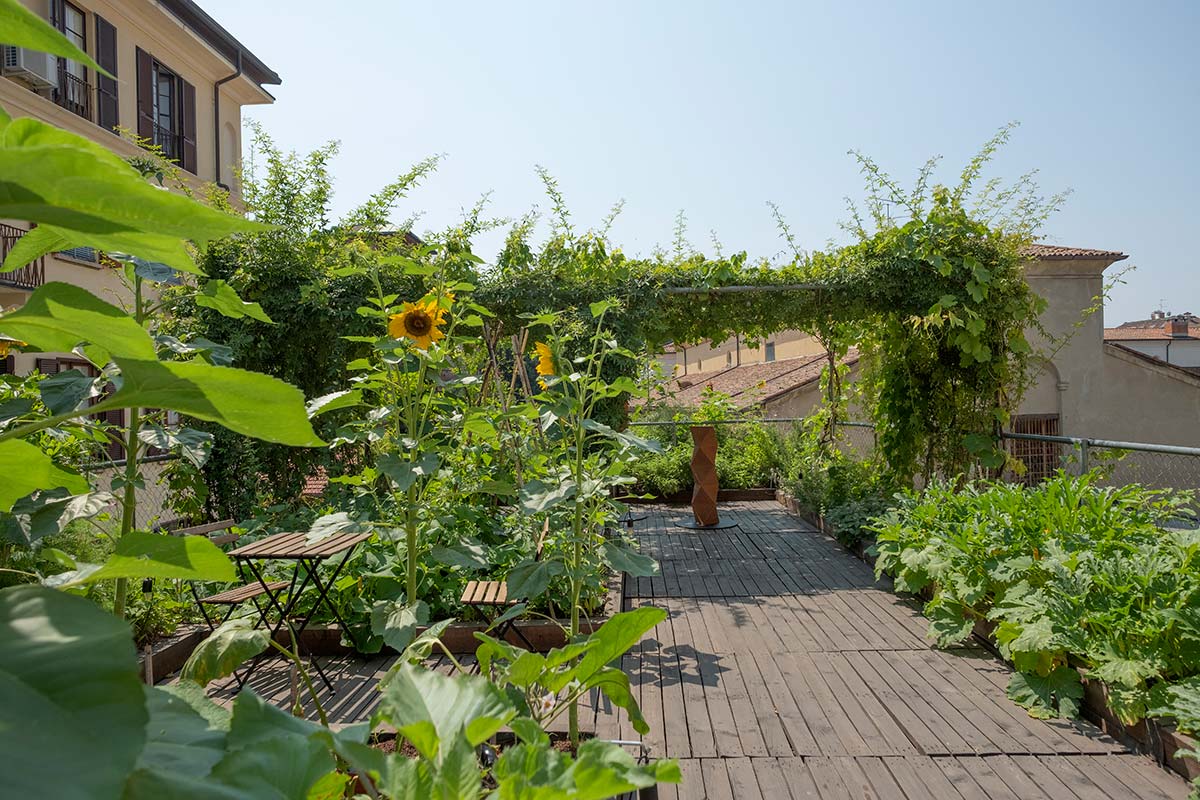
What do you think are the easiest mistakes to make when thinking about a balcony, a garden, a plot of land?
The biggest mistake is to start by choosing plants from a purely aesthetic point of view. So you take a jasmine, a pieris japonica and a rudbeckia and put them all together. They all have different needs and you always need to consult someone with a minimum of expertise. If you have a balcony, you don’t need a designer, but it’s essential to know your plants: sometimes I see acidophilic plants put together with non-acidophilic ones, and one of them will have problems. Then there is another thing: like people, some plants do not like company. A simple example: if you put basil next to mint, the mint will eat it. The same goes for ivy, the most European of plants. There is a lot of sensitivity about this. Native plants, however, have a problem: with such rapid climate change, it is as if they are no longer ‘native’. So they find it harder to adapt to the climate that is coming.
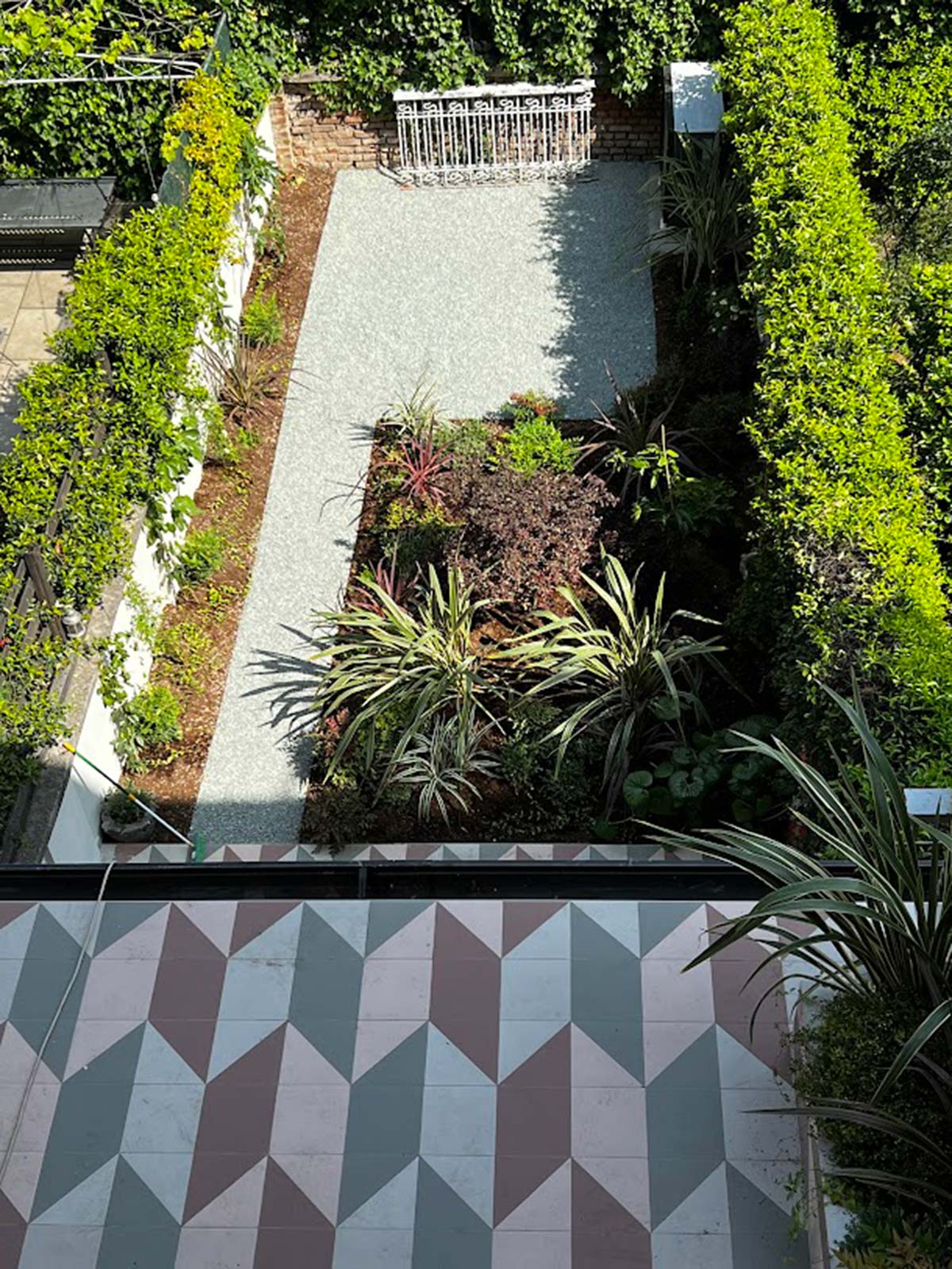
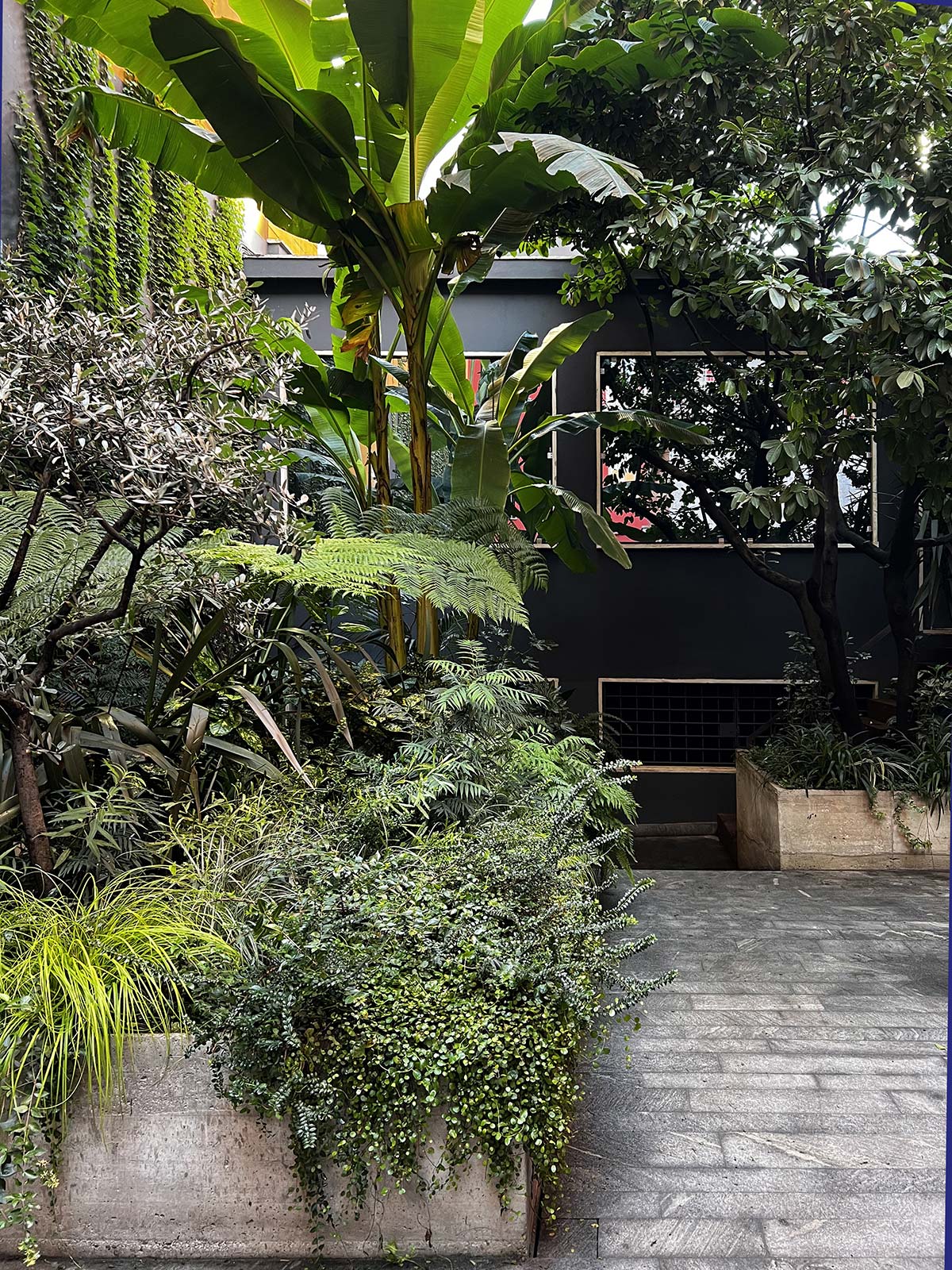
Going back to outdoor furniture, what do you think is the most useful piece?
The parasol, which I much prefer to curtains – when the heat is gone, you close it up, put it in the cellar and never see it again. However, when I look at customer requests, I would say that the most compelling pieces are those made from recycled materials. That’s something that everyone pays attention to. The same goes for the vases and all the accessories.
What is your recipe for the best outdoor living?
Build a corner with plants that you grow from seed to see their full cycle. Any plant, any seed. Also changing from year to year. That way you understand exactly how nature works. That is important.
